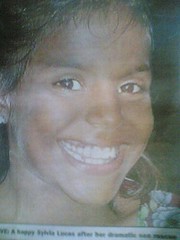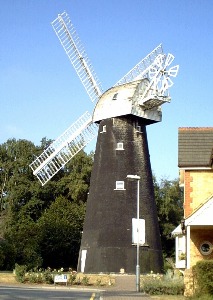The Bison Forest and Tolstoy's War and Peace
The Bison Forest or Bialowieza Forest once extended from the Nordic icelands to quite near the Mediteranean Sea near Spain and from the North Sea to right across to Central Russia. Now it has shrunk to the border between Poland and Belarus. An area 3 miles by 5 miles has species that have been undistrubed over time. About 300 European Bison have been reintroduced. Russian Czars and Emperors built a hunting lodge-palace and had seasonal hunting trips in the Forest, though they restocked the forests over the years and protected parts of the forest. A mighty oak tree that started life in the forest in the 14th century and under which a Polish Prince took refuge from his enemies, was blown over by heavy winds just 10 years ago.
Bialowieza Forest
"Situated on the watershed of the Baltic Sea and the Black Sea, this immense forest range, consisting of evergreens and broad-leaved trees, is home to some remarkable animal life, including rare mammals such as the wolf, the lynx and the otter, as well as some 300 European Bison, a species which has been reintroduced into the park."
I also happened to watch a television dramatisation of Leo Tolstoy's "War and Peace". I was surprised to see a scene where horses and hounds were used to chase some animal, probably the fox. I wonder how the scene is actually depicted in the book. ( Today while at a busy crossroads on a main road nearing home, a fox waited for the traffic to die down and then crossed the road looking well pleased with himself.)
The scenes showed the similarities in court life between Europe and Russia. Curiously when Bonaparte's armies marched into Russia the peasant folk gave them their carts, animal stocks and horses and burnt down their own crops. Quel dommage!
Did that pave the way for the end of the rule of the Czars ? Quel dommage seeing as the French concept of Liberte, Egalite, Fraternite never took hold on Russian soil but Karl Marx's teachings did in a way he never meant.
""It was the best of times, it was the worst of times, it was the age of wisdom, it was the age of foolishness, it was the epoch of belief, it was the epoch of incredulity..."--from Tale of Two Cities, by Charles Dickens .
More analysis of the Napoleonic era at :
Cadalyst
Considering the film had Henry Fonda and Audrey Hepburn in it, it's quite likely the film had nothing to do with how Tolstoy meant the story to be enacted if he'd had a choice in the matter. Court life in Europe and Russia may have had some similarities but the differences might have been greater.
Bialowieza Forest
"Situated on the watershed of the Baltic Sea and the Black Sea, this immense forest range, consisting of evergreens and broad-leaved trees, is home to some remarkable animal life, including rare mammals such as the wolf, the lynx and the otter, as well as some 300 European Bison, a species which has been reintroduced into the park."
I also happened to watch a television dramatisation of Leo Tolstoy's "War and Peace". I was surprised to see a scene where horses and hounds were used to chase some animal, probably the fox. I wonder how the scene is actually depicted in the book. ( Today while at a busy crossroads on a main road nearing home, a fox waited for the traffic to die down and then crossed the road looking well pleased with himself.)
The scenes showed the similarities in court life between Europe and Russia. Curiously when Bonaparte's armies marched into Russia the peasant folk gave them their carts, animal stocks and horses and burnt down their own crops. Quel dommage!
Did that pave the way for the end of the rule of the Czars ? Quel dommage seeing as the French concept of Liberte, Egalite, Fraternite never took hold on Russian soil but Karl Marx's teachings did in a way he never meant.
""It was the best of times, it was the worst of times, it was the age of wisdom, it was the age of foolishness, it was the epoch of belief, it was the epoch of incredulity..."--from Tale of Two Cities, by Charles Dickens .
More analysis of the Napoleonic era at :
Cadalyst
Considering the film had Henry Fonda and Audrey Hepburn in it, it's quite likely the film had nothing to do with how Tolstoy meant the story to be enacted if he'd had a choice in the matter. Court life in Europe and Russia may have had some similarities but the differences might have been greater.






 Written by Charles C. Wetherell while at Livermore Labs, it attracted just the right kind of hacker personalities. People who were initiated and inspired by Etudes tend to be exceptionally good programmers.
Written by Charles C. Wetherell while at Livermore Labs, it attracted just the right kind of hacker personalities. People who were initiated and inspired by Etudes tend to be exceptionally good programmers.
 Software Practice and Experience available
Software Practice and Experience available 







